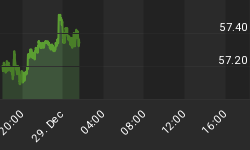Financial Markets Summary For The Week of October 6-10 2008
The week of October 6-10 will see a light week of economic data that will be dominated by the Tuesday FOMC minutes from the September 16 meeting and Fed Chair Ben Bernanke speech that same day. Other data to be released during the week will be the Wednesday pending home sales report for August and the weekly initial claims data on Thursday. The week will close with the publication of the August trade balance and the September import price estimate. Depending on events over the weekend out of the US Congress and perhaps the Fed, the market conditions may see a bit of volatility during the early part of next week over economic concerns and redemptions in the hedge fund community.
Fed Talk
After another earth shaking week in the global markets, market participants will be observing comments from a variety of current and former members of the Federal Reserve System that will be speaking during the upcoming week. The major event looks to be the 7 October speech by Fed Chair Bernanke, topic TBA at 12:30 EDT. Monday will see former US Fed Chair Paul Volker and former Fed Vice-Chair Roger Ferguson address the topic of global financial supervision in the global marketplace. Chicago FRB President Evans will address productivity trends in the manufacturing industry, also on Monday. Minneapolis FRB President Stern will speak on the "Repercussions from the Financial Shock" on Tuesday.

FOMC Minutes Tuesday 2:15 PM
The volume and magnitude of the steps taken by the Fed in the run-up to the most recent FOMC meeting and those taken in its aftermath are arguably the most important taken in the long history of the institution. The primary focus of the minutes will be the discussion organized around the Fed decision of September 14 to accept a wider range of collateral under both the term securities lending facility and the primary dealer credit facility programs. The secondary focus of the market will be to assess the probability of either an intermeeting rate cut or a reduction in the federal funds rate when the FOMC meets on October 29 based on the economic assessment of the condition of the consumer, the labor market and business investment. To a certain extent, Mr. Bernanke has already made the case that the downside risk for the consumer, jobs and corporate investment may warrant a rate cut, but a fragile market will be looking for signs of imminent action by the Fed ahead of its next meeting.
Pending Home Sales (August) Wednesday 10:00 AM
Pending homes sales in August should see another month of declines when we anticipate that the headline will decline -2.3% vs. the -3.2% drop posted in July. The purchasing environment in August picked up slightly in the existing home sector mostly due to the availability of heavily discounted foreclosures that have hit the market. According to the National Association of Realtors between 35-40% of the sale of existing homes can be attributed to the purchase of distressed properties.
Initial Jobless Claims (Week ending October 4) Thursday 08:30 AM
The continuing claims series illustrates the growing weakness in the US labor sector. The number of individuals collecting benefits is the highest since September 2003. While, initial claims is higher than it otherwise would be due to the dislocation caused by the hurricanes to hit the Gulf Coast in September, the upward trend in the data is clear and we do expect to observe an increase in claims associated with the credit panic in the coming weeks.
Trade Balance (August) Friday 08:30 AM
The trade balance for August should see some improvement on the back of the decline in oil prices. Our forecast implies that the trade balance should improve to -$57.3bln vs. the -$62.98bln posted in July. Ex-petroleum the deficit stands at -$18.80bln and is a reflection of the relative weakness of the dollar and the extent to which the US relies on oil imported from abroad. The moderation in energy prices should facilitate a further narrowing of the trade deficit going forward, but the deceleration of the global economy should cause the increase to moderate in coming months.
Import Prices (September) Friday 08:30 AM
After posting the single largest decline in the cost of imported goods in nearly two decades, import prices for the month of September should fall -2.5% m/m primarily due to the correction in global energy markets during the sampling period. Demand for commodities and energy declined perceptibly during the period and the risk for the trading day is to the downside. Moreover, there are now signs that reduced demand in the US has spilled over to other industrialized nations where firms may feel pressed to reduce prices to control inventory levels and maintain market share abroad. For now the decline in import prices remains primarily an energy story. But, should the clogging up of credit markets continue, prices of imported goods across the broad spectrum of the economy could see further retrenchment.
















